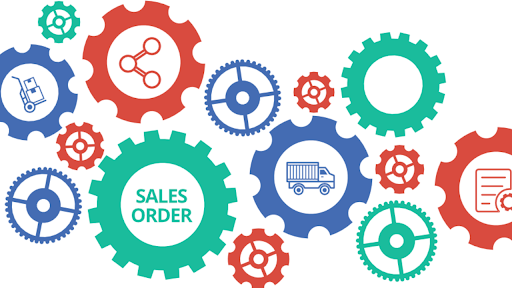The Transformative Impact of Order Process Automation

In today’s fast-paced business environment, efficiency is more critical than ever. Companies constantly seek ways to streamline operations, reduce costs, and enhance customer satisfaction. One of the most transformative innovations in recent years is order process automation. By leveraging technology to automate order processing, businesses can achieve remarkable improvements in efficiency and accuracy. This article delves into the transformative impact of order process automation, highlighting its benefits, challenges, and future outlook.
1. The Rise of Order Process Automation
Defining Order Process Automation
Order process automation refers to using technology to manage and streamline the order fulfillment process. This typically involves automating tasks such as order entry, inventory management, tracking, and invoicing. By replacing manual processes with automated systems, businesses can reduce human error, accelerate processing times, and improve efficiency.
The Evolution of Automation
Order processing automation has evolved significantly from simple task automation to complex, integrated systems. Early solutions focused on automating individual tasks, such as data entry or inventory updates. Today, order process automation encompasses end-to-end solutions that integrate with other business systems, such as customer relationship management (CRM) and enterprise resource planning (ERP) systems. This evolution has made it possible to create highly efficient and cohesive order-processing workflows.
2. Key Benefits of Order Process Automation
Enhanced Accuracy and Reduced Errors
One of the primary advantages of order process automation is the significant reduction in errors. Manual order processing is prone to mistakes, such as miskeyed information, incorrect product codes, and misinterpretations of customer orders. Automated sales order systems process orders using predefined rules and algorithms, ensuring data accuracy and consistency. This error reduction improves order accuracy and enhances customer satisfaction, as customers receive exactly what they ordered without discrepancies.
Increased Efficiency and Speed
Order process automation drastically improves processing speed. Automated systems can handle a high volume of orders quickly and efficiently, reducing the time required to process each order. This acceleration in order fulfillment leads to faster delivery times, enhancing customer satisfaction and providing a competitive edge. Additionally, automation frees up staff from repetitive tasks, allowing them to focus on more strategic activities.
Cost Savings
By automating order processes, businesses can achieve significant cost savings. Automation reduces the need for manual labor, minimizes errors that can lead to costly corrections, and optimizes inventory management. The cost savings from reduced labor and fewer errors can be substantial, especially for businesses with high order volumes.
Improved Customer Experience
A streamlined order process translates to a better customer experience. Automation enables real-time order tracking, accurate delivery estimates, and prompt updates on order status. Customers can receive notifications about their order progress and have access to self-service options for managing their orders. This level of transparency and efficiency enhances customer satisfaction and loyalty.
3. Challenges and Considerations
Implementation Costs
While the benefits of order process automation are significant, the initial implementation costs can be challenging for some businesses. Automation technology investment requires a financial outlay for software, hardware, and training. However, these costs should be weighed against the long-term savings and efficiency gains.
Integration with Existing Systems
Integrating order process automation with existing business systems can be complex. Businesses must ensure that their automation solutions are compatible with their CRM, ERP, and other systems. Seamless integration is crucial for achieving the full benefits of automation and avoiding disruptions in business operations.
Change Management
Implementing automation often requires changes in business processes and employee workflows. Effective change management is essential to ensure a smooth transition and to address any resistance to new technologies. Providing adequate employee training and support can help ease the transition and maximize the benefits of automation.
4. The Future of Order Process Automation
Advancements in Technology
The future of order process automation is poised for exciting developments. Emerging technologies such as artificial intelligence (AI) and machine learning are expected to enhance automation capabilities further. AI can provide predictive analytics for inventory management, optimize order routing, and improve decision-making processes. Machine learning algorithms can continuously improve automation systems by learning from data and adapting to changing conditions.
Integration with IoT
Another promising trend is the integration of automation with the Internet of Things (IoT). IoT devices can provide real-time data on inventory levels, product conditions, and order status. This data can be used to optimize order processes, improve accuracy, and enhance supply chain visibility.
Personalization and Customer-Centric Automation
Future developments in order process automation will likely focus on personalization and customer-centric approaches. Automation systems may become more adept at providing personalized customer experiences, such as tailored recommendations and customized order options. This shift towards a more customer-centric approach will further enhance the value of automation for businesses.
Bottom Line
Order process automation has redefined efficiency in business operations. Businesses can achieve remarkable accuracy, speed, and cost savings by automating order entry, inventory management, and other critical tasks. While implementation challenges are associated, the long-term benefits of automation far outweigh the initial investments. As technology advances, the future of order process automation promises even greater innovations and opportunities for businesses to enhance their operations and customer experiences. Embracing automation is not just a trend but a strategic move toward achieving sustained efficiency and success.


